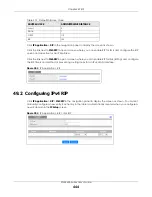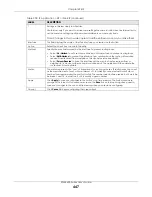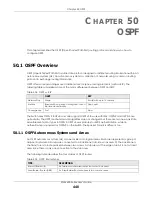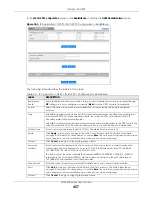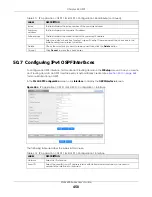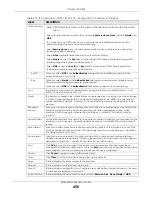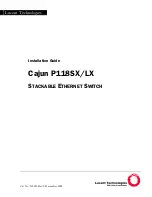
Chapter 50 OSPF
XGS4600 Series User’s Guide
448
C
HAPTER
50
OSPF
This chapter describes the OSPF (Open Shortest Path First) routing protocol and shows you how to
configure OSPF.
50.1 OSPF Overview
OSPF (Open Shortest Path First) is a link-state protocol designed to distribute routing information within an
autonomous system (AS). An autonomous system is a collection of networks using a common routing
protocol to exchange routing information.
OSPF offers some advantages over traditional vector-space routing protocols (such as RIP). The
following table summarizes some of the major differences between OSPF and RIP.
The Switch uses OSPFv2 for IPv4, and also supports OSPFv3 to work with IPv6. OSPFv2 and OSPFv3 are
quite similar. The OSPF mechanisms and algorithms are not changed but there are two new Link State
Advertisements (LSA) types in OSPFv3. OSPFv2 uses plain text or MD5 authentication, while no
authentication is required for OSPFv3 on the Switch. Their packet format is different, too.
50.1.1 OSPF Autonomous Systems and Areas
An OSPF autonomous system (AS) can be divided into logical areas. Each area represents a group of
adjacent networks. All areas are connected to a backbone (also known as area 0). The backbone is
the transit area to route packets between two areas. A stub area, at the edge of an AS is not a transit
area since there is only one connection to the stub area.
The following table describes the four classes of OSPF routers.
Table 204 OSPF vs. RIP
OSPF
RIP
Network Size
Large
Small (with up to 15 routers)
Metrics
Bandwidth, hop count, throughput, round
trip time and reliability.
Hop count
Convergence
Fast
Slow
Table 205 OSPF: Router Types
TYPE
DESCRIPTION
Internal Router (IR)
An Internal or intra-area router is a router in an area.
Area Border Router (ABR)
An Area Border Router connects two or more areas.











